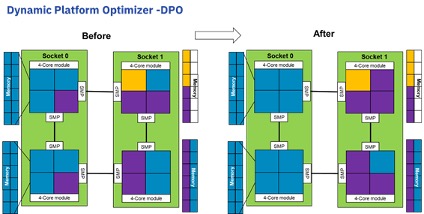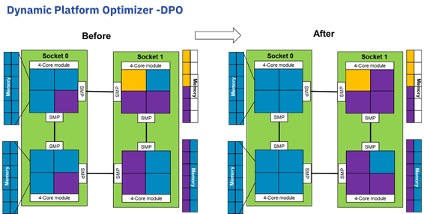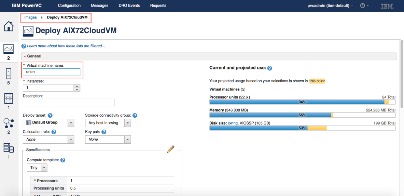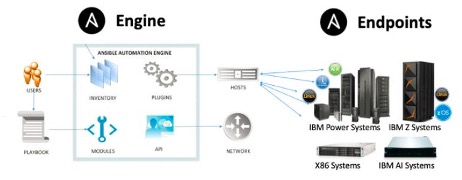Performance and Management Tools for AIX and Power Systems: Features and Use Cases
While monitoring and management solutions perform somewhat similar tasks, they’ve traditionally served different enough functions to keep them from being optimally paired as a collaborative unit. Management tools ensure that your system is available, configured properly or optimized and its components are connected correctly and as expected, whereas monitoring tools look for overall system, communication, and application performance impacts. For the above-mentioned reasons, management tools are important assets in the IT environment since they optimize your systems.
In this article, I’ll explain the main features and use cases of different management and performance tools for AIX and Power Systems.
Dynamic Platform Optimizer (DPO)
The first tool that I want to explain is the Dynamic Platform Optimizer (DPO). This optimizer work at the HMC level and allows to improve the processor and memory placement by performing memory relocations. You can think of it as a memory defragmenter. It optimizes memory and processor affinity after partitions are up and running.
Sometimes, due to lot of dynamic LPAR operations or migration of LPARs using LPM, the placement between memory and processor resources can get suboptimal. When this happens, the Power Systems get latency problems due to nature of the configuration changes happening in the system. In older days, the only way to fix this was by shutting down and restarting again the server. However, nowadays, we don’t need to do that, you can improve and fix this problem, by just running this optimizer the DPO. Figure 1 shows a common situation in large IBM Power Systems and how this optimizer works.

Figure 1
In left side of figure 1, you can see the blue LPAR was not optimal, because it was using cores coming from two different sockets, thus increasing memory latency. After running the DPO, the blue LPAR is optimal because now, is using cores from a single socket. Therefore, its performance was improved.
The DPO is easy to use tool. You only need to run the following two commands at the HMC command line:
- lsmemopt -m msname -o currscore: It determines the current and predicted system score
- optmem –m msname –o start –t affinity: It optimizes the managed system. It can be run on fly.
Dynamic System Optimizer (DSO)
Whereas the DPO works at the hardware level, the Dynamic System Optimizer (DSO) works at the OS level. The DSO optimizes threads within an OS instance (LPAR). It improves system operation with large memory fragmentation. This makes AIX fully aware of its hardware placement and allocated resources. To illustrate how the DSO works, you can see figure 2. All the LPARs are optimized from the hardware perspective. However, since the blue LPAR is very big, it can happen that one thread needs to access memory coming from other socket, thus creating a bad remote memory access.

Figure 2
DSO avoids the above-mentioned situation by optimizing memory and cache access in such a way the processes using memory on socket0 use processors in socket0. It improves performance by detecting the process and applies different optimization strategies to improve performance. For example, depending on how long the process has been running, it can apply one of the following optimizations:
- Cache affinity (cache affinity five minutes)
- Memory affinity (affinity 30 minutes)
- Large page optimization (Large page: one or two hours; included with AIX 7.2)
The DSO applies the different optimizations. If these don’t work, then they’re rollback because maybe the process is ineligible for optimizations.
You only need to make sure the aso process is running under AIX, by running the following commands the lssrc -s aso command. Keep in mind, the best workloads for DSO are multi-threaded applications with longer-running threads running on larger servers with lots of processors and memory.
Virtual I/O Server (VIOS) Rules Management
Now, I want to explain the VIOS rule management command. This command applies the configuration best practices for VIOS installations. Therefore, every time you create a new VIOS, run the rules command with the option deploy and this is going to allow you to apply the best practices configuration values for the different fiber channel ports and ethernet adapters. The rules management command leverages AIX Run Time Expert Solution (ARTEX) technology.
There are two type of rule files to be aware:
- The default: contains the critical recommended configuration for VIOS best practice
- The current: captures the current VIOS system settings

Figure 3
Figure 3 depicts the different operations provided by this tool. The most important operations to bear in mind are:
- rules -o list -s: Listing currently applied rules. In other words, this will list the currently best practices applied for VIOS configuration.
- rules -o deploy -d: Deploying default rules. This will apply the recommended configuration for VIOS.
Most of the optimizations provided by this rules command are related to FC, hdisk and vNIC adapters. Try to use it, since It’s free optimization with no effort for VIOSes. This tool also provides flexibility to manage and customize device settings.
PowerVC for Private Cloud: Self-Service Portal
Now, I want to talk about another popular tool—Power Virtualization and Cloud Management (PowerVC). This tool provides a simplified user experience for VM provisioning and management. PowerVC can help in at least two scenarios. First, when you have a very complex environment, where there are a lot of different HMCs and Power Systems with hundreds or even thousands of LPARs, and everyday different LPARs are being created. In that case, it’s a good idea to use PowerVC, because it’s going help to reduce the management complexity of that environment.
On the other hand, it’s a good idea to use PowerVC when we have a customer which is not knowledgeable of administration the Power System. In that case, PowerVC is a lot of help, because the customer doesn’t need to know all the intricacies of how to create a LPAR and doesn’t need to know the commands to be run in VIOS in order to create the LPARs or any kind of virtual resource.

Figure 4
In figure 4 you can see how the process to deploy a new AIX LPAR looks like. It’s a very similar task as if you were creating a new VM in a public cloud provider. You only have to define the amount of processor, memory and LUNs size. That’s all, after a couple of minutes you’ll get a new LPAR up and running. All this happens without executing any command on VIOS or AIX. In few words, PowerVC provides hybrid cloud experience to IBM Power users.
PowerVC provides the following benefits:
- Simplified virtualization and cloud management and for AIX, IBM i and Linux and SAP HANA LPARs on POWER
- Designed to build private cloud on POWER servers and improves productivity
- Saves the cost of formal training and requires no specialized skills
Ansible Automation Platform for Power Systems
Ansible is designed as an automation platform, and has many use cases such as orchestration, continuous delivery, configuration management and provisioning. Regarding Power Systems, Ansible automates repetitive IT management tasks, which increases productivity of AIX, IBM i and IBM POWER admins and extends consistent management across multiple platforms. Ansible provides improved efficiency via the simplification and standardization of complex IT environments and enterprise automation strategies.

Figure 5
Figure 5 shows the Ansible Architecture. First, we have the Ansible Engine which is the system where Ansible is installed and run playbooks. The Ansible Engine can be installed in AIX. Then, we have the playbooks contain tasks which specify the desired end state for the endpoints or hosts. Ansible execute these tasks using SSH. Then we have the modules which are “tools in the toolkit”. They extend Ansible simplicity to the entire stack. In other words, modules provide small programs to automate repetitive tasks such as User management, LVM storage, TCP/IP, OS patching, among others. Therefore, Ansible users don’t need to code anything to automate these repetitive tasks.
Although there are other automation tools such as Puppet and Chef and they work very well with Power Systems and AIX, Ansible is very popular among AIX users because of its simplicity it’s agentless (every tasks is run with SSH) and the breadth of modules available in Ansible Galaxy to automate tasks for AIX and Power System platforms.
Final Thoughts on AIX and Power Systems Tools
There are other management and performance tools which I didn’t mention in this article, such as: NIM, IBM Big Fix, PowerSC, the former PowerVP and SUMA. However, the main idea is to make use of the different management and performance tools available for AIX and Power Systems in such a way that your IT specialists can focus on tasks that add value to their business. In addition, it’s common that IT environments are increasing in complexity. Therefore, providing the right management tools is not a luxury, it’s a requirement.